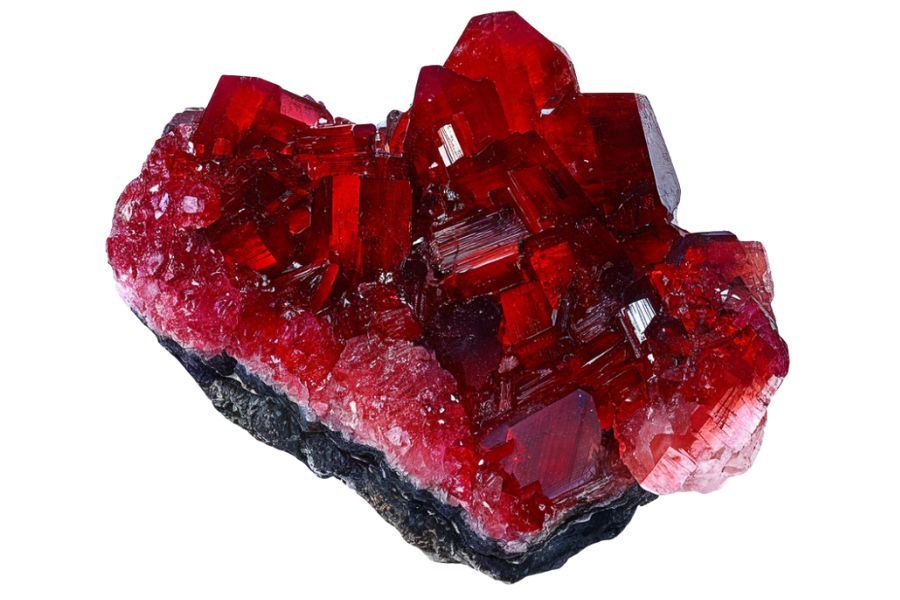Garnets sparkle like tiny red stars in Washington’s rocky streams and hills. These gemstones have drawn both serious rockhounds and weekend explorers for generations.
I found my first garnet while camping near the Cascade Mountains. The small, dark red crystal caught the sunlight just right as I waded through a shallow creek. That moment sparked years of adventures searching for more.
Washington offers several spots where you can try your luck at finding these gems. From the Wenatchee River to specific areas in Kittitas County, garnet hunting combines outdoor fun with the thrill of discovery.
How Garnet Forms Here
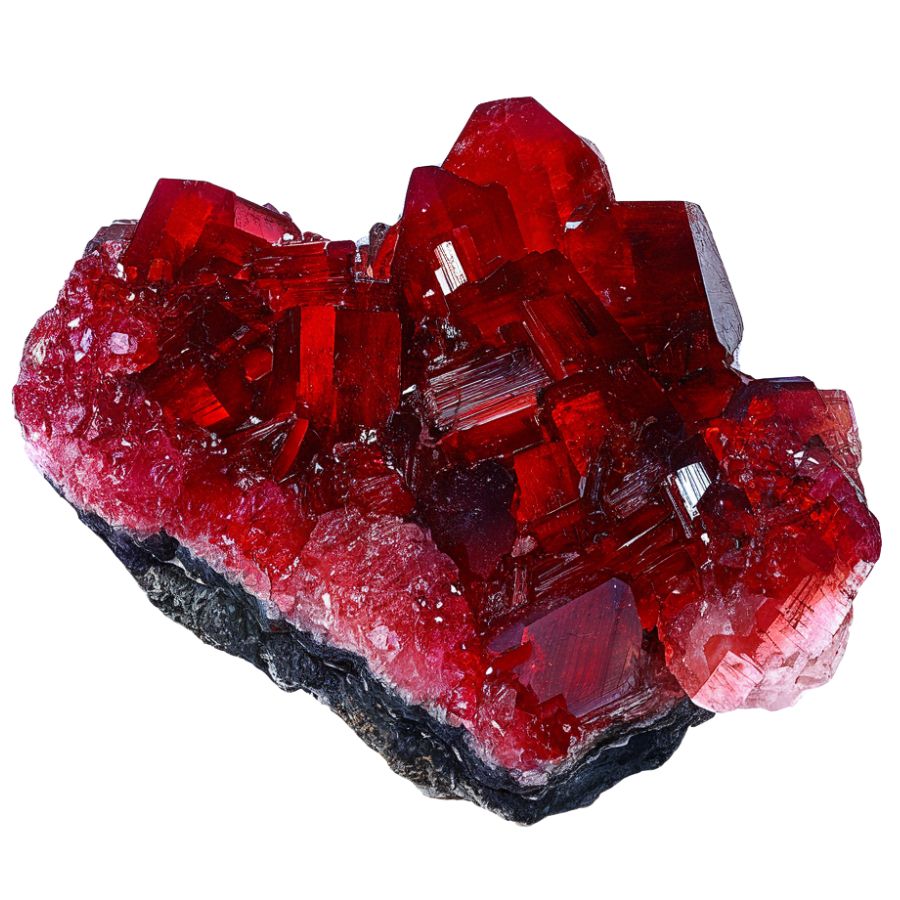
Garnet forms deep underground when rocks get squeezed and heated during metamorphism. Think of it like baking cookies – but instead of dough, you’ve got minerals like aluminum, iron, and silica getting cooked under intense pressure.
When these minerals reach temperatures around 400-700°C, they start rearranging their atoms into garnet’s distinctive crystal structure.
What’s cool is that garnets often grow by pushing other minerals out of the way! That’s why they form those perfect geometric shapes.
Most garnets need high pressure too, which is why they’re usually found in rocks that were once buried miles beneath the surface. The slower they grow, the bigger and clearer they become – some taking millions of years to reach their full size.
Types of Garnets
Garnets are captivating gemstones that showcase an impressive range of colors and varieties, each determined by their unique chemical composition. Understanding these differences helps in identifying the stone’s value.
Almandine Garnet
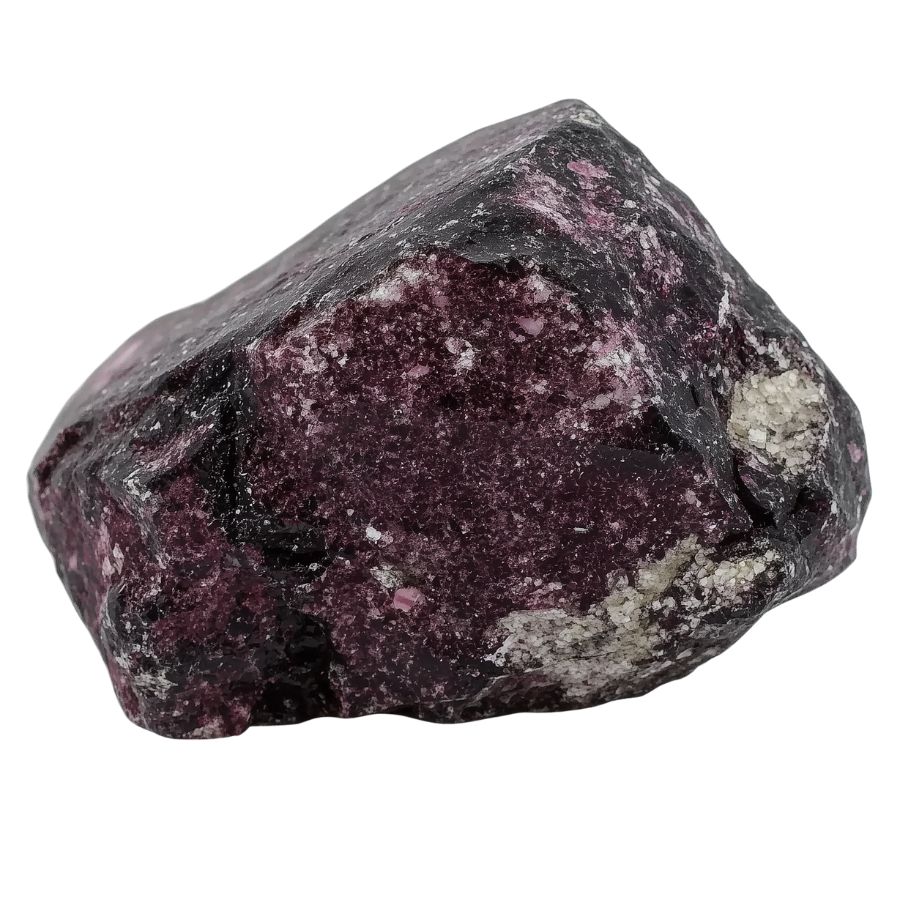
Almandine garnet stands out with its rich, deep red to reddish-brown color. The stone sometimes shows hints of orange or brown, making each piece unique. Its color intensity remains consistent throughout the stone, creating a beautiful depth that catches the eye.
The crystal structure of almandine follows a perfect cubic pattern, forming well-defined shapes with smooth faces. This symmetry contributes to its striking appearance and helps light bounce through the stone evenly.
What makes almandine special is its high iron content, which gives it a higher specific gravity than other garnets. This means it feels slightly heavier in your hand compared to similar-sized stones. Its refractive index of 1.74 to 1.83 creates excellent brilliance and fire.
Most almandine garnets are remarkably clear, though some may contain natural inclusions that create interesting patterns. These patterns can add character to the stone without affecting its overall beauty or durability.
Pyrope Garnet
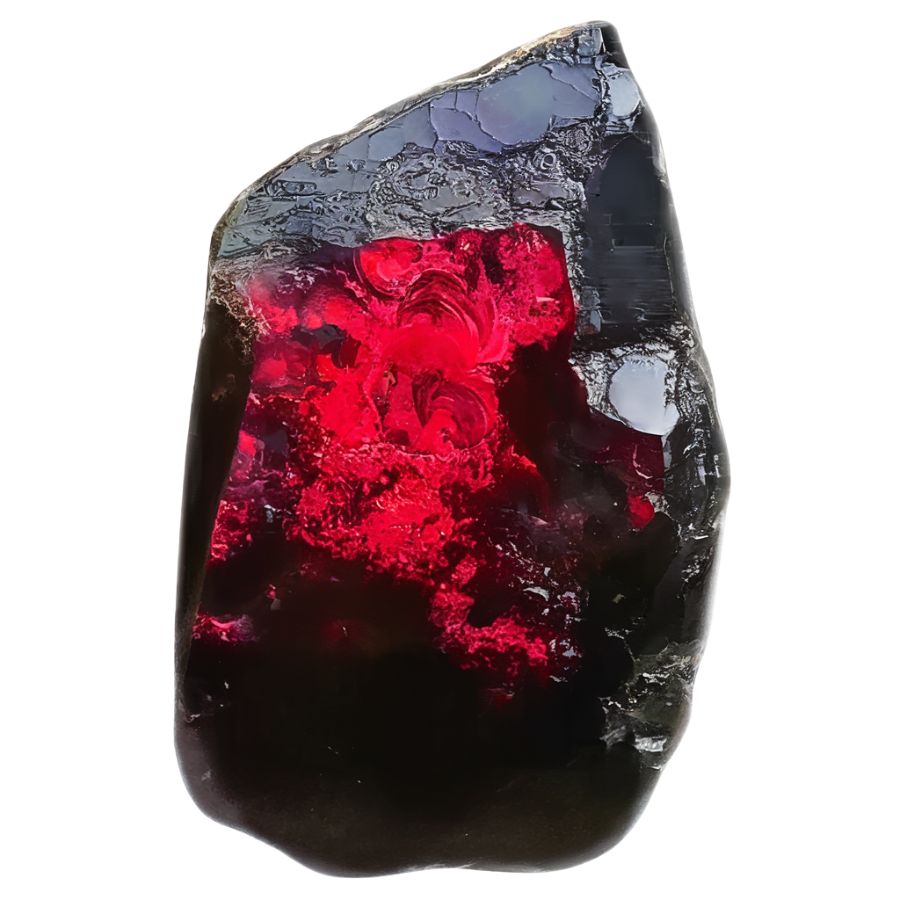
Pyrope garnet captivates with its intense red-to-purplish-red color. The color is so pure and vibrant that some specimens have earned the nickname “Cape Ruby.”
This stone has excellent clarity, rarely showing visible inclusions. When present, some inclusions can create a fascinating star effect called asterism, where a six-pointed star seems to float on the surface.
The stone appears especially vivid when cut into clean, geometric shapes that maximize light return.
Some pyropes show a subtle color shift, appearing slightly different under natural and artificial light. This subtle change adds to their charm and makes each stone unique.
Their exceptional clarity and lack of internal flaws make them particularly appealing to collectors.
Spessartine Garnet
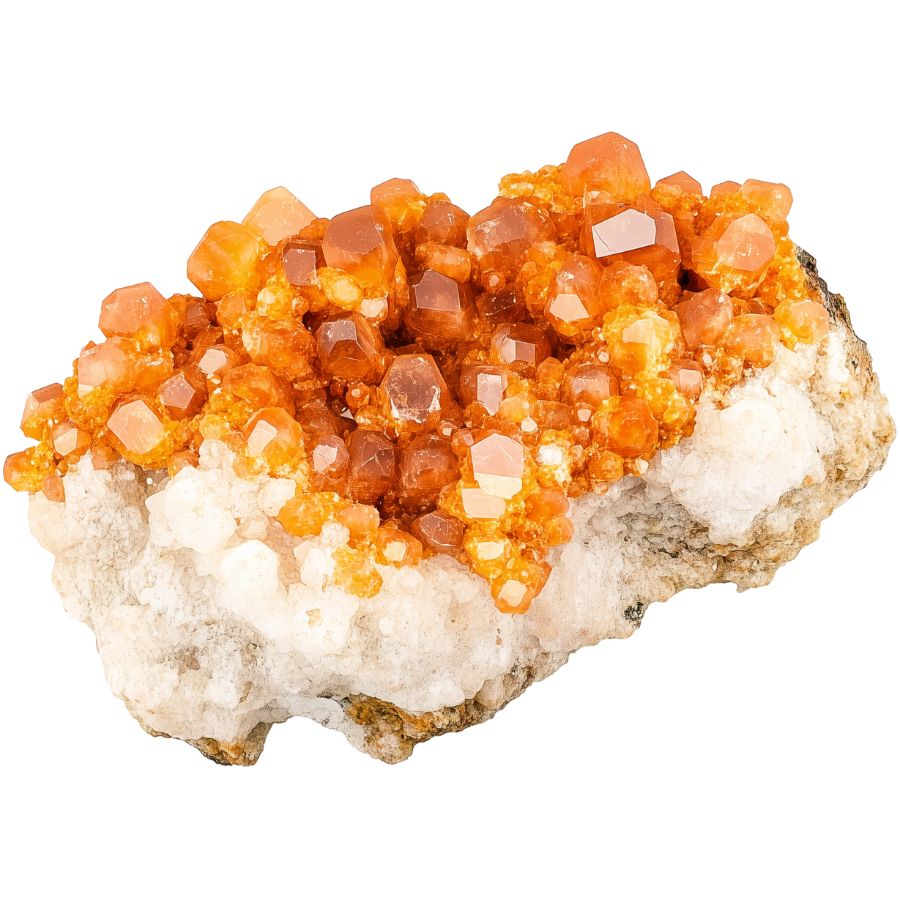
Spessartine garnet showcases a stunning range of orange colors, from bright mandarin to deep reddish-orange. The most valued pieces display a pure, vivid orange. This distinctive coloring comes from manganese in its chemical makeup.
When cut properly, spessartine exhibits bright flashes of light and exceptional sparkle. Some stones show a subtle “sugar-like” texture that creates a soft, internal glow.
Pure spessartine is rare in nature, making high-quality specimens particularly valuable. Most stones contain trace elements that create subtle color variations.
The stone’s transparency ranges from completely clear to slightly cloudy. Clear specimens are highly prized, but some collectors prefer stones with slight cloudiness that creates an interesting depth effect.
Andradite Garnet
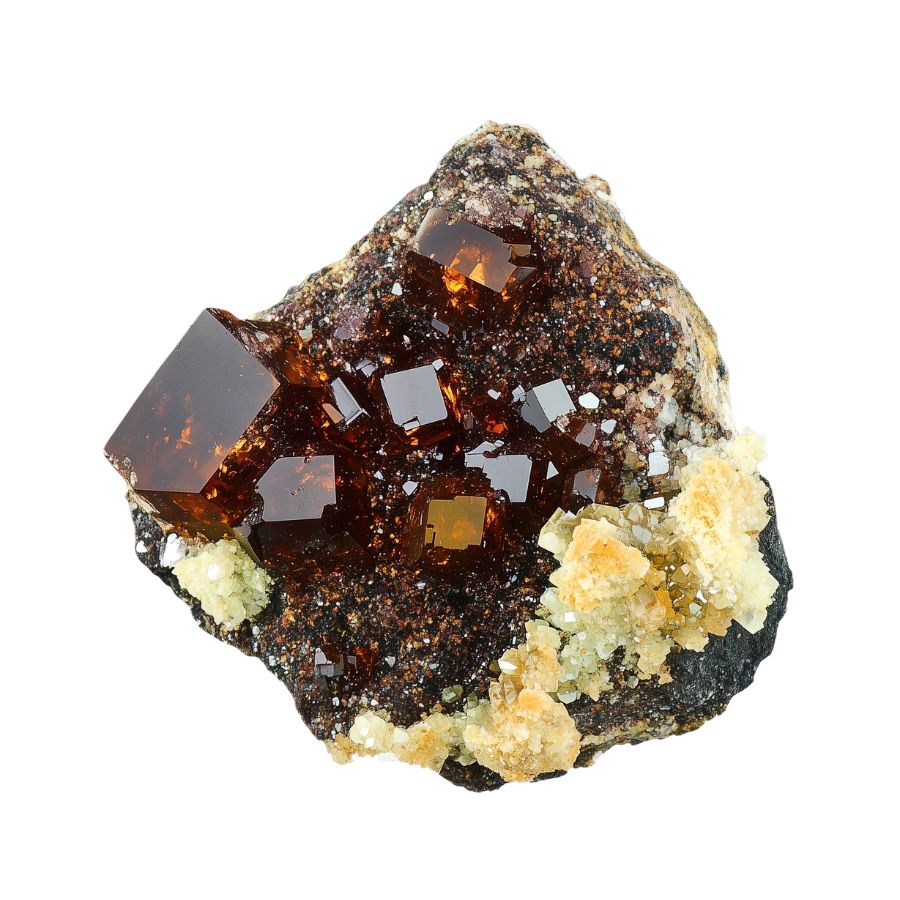
Andradite garnet displays the widest color range of all garnets. Colors span from bright green to yellow, brown, and black. The green variety, known as demantoid, is particularly treasured for its brilliant, emerald-like color and exceptional sparkle.
This stone has the highest dispersion rate of all garnets, even higher than diamond. This means it breaks light into rainbow colors more effectively, creating fascinating fire and brilliance.
Some andradite garnets contain unique internal features called “horsetail” inclusions. These fine, needle-like patterns are actually desired by collectors and add to the stone’s value.
The stone’s surface has a bright, glass-like luster that enhances its natural beauty. Some specimens exhibit unique optical features such as asterism (star-like patterns) and chatoyancy (cat’s eye effect), which further enhance their visual appeal.
Grossular Garnet
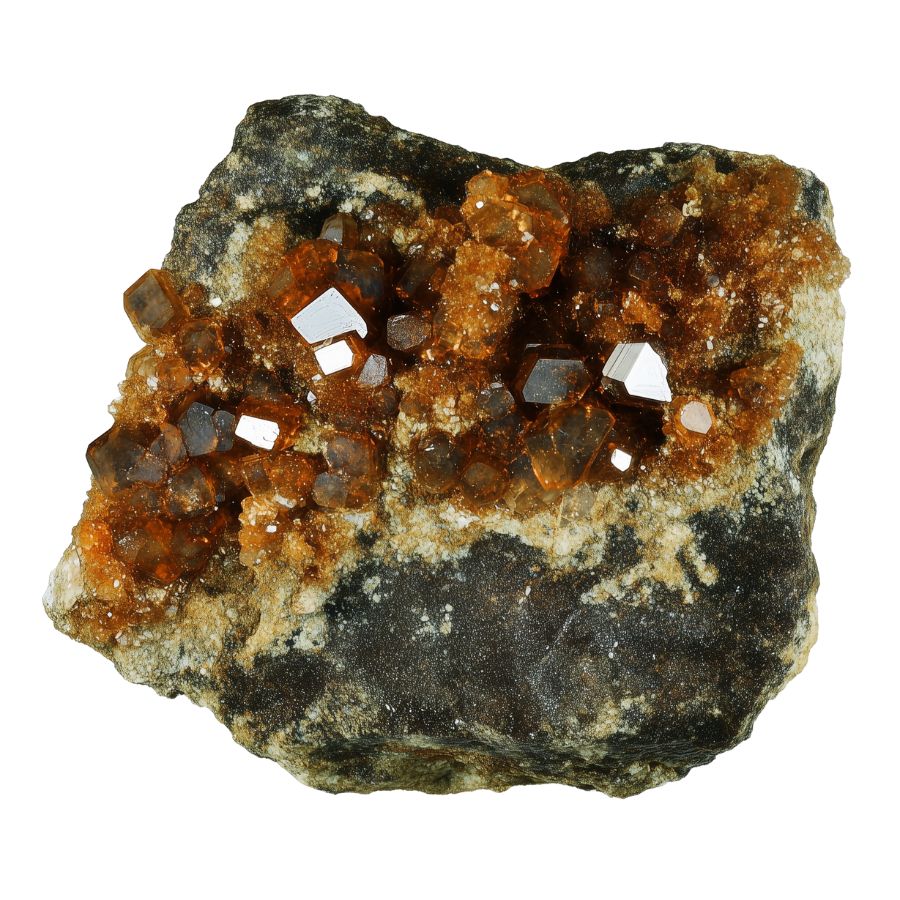
Grossular garnet comes in an amazing range of colors – from green and yellow to pink, orange, and even colorless. The most striking feature is the presence of internal swirls and streaks that create unique patterns within each stone.
The stone’s surface has exceptional brilliance that rivals expensive gems like emeralds. Light bounces through it beautifully, creating bright flashes and sparkles.
A special variety called Mint Garnet glows under ultraviolet light, creating an otherworldly effect. This unusual property makes it particularly interesting to collectors. The stone’s clarity is typically excellent, with few visible impurities.
The presence of trace elements like chromium and vanadium creates its varied colors. These elements mix in different amounts, resulting in subtle color variations that make each stone unique.
Some pieces show color zoning, where different shades blend together in distinct patterns.
Uvarovite Garnet
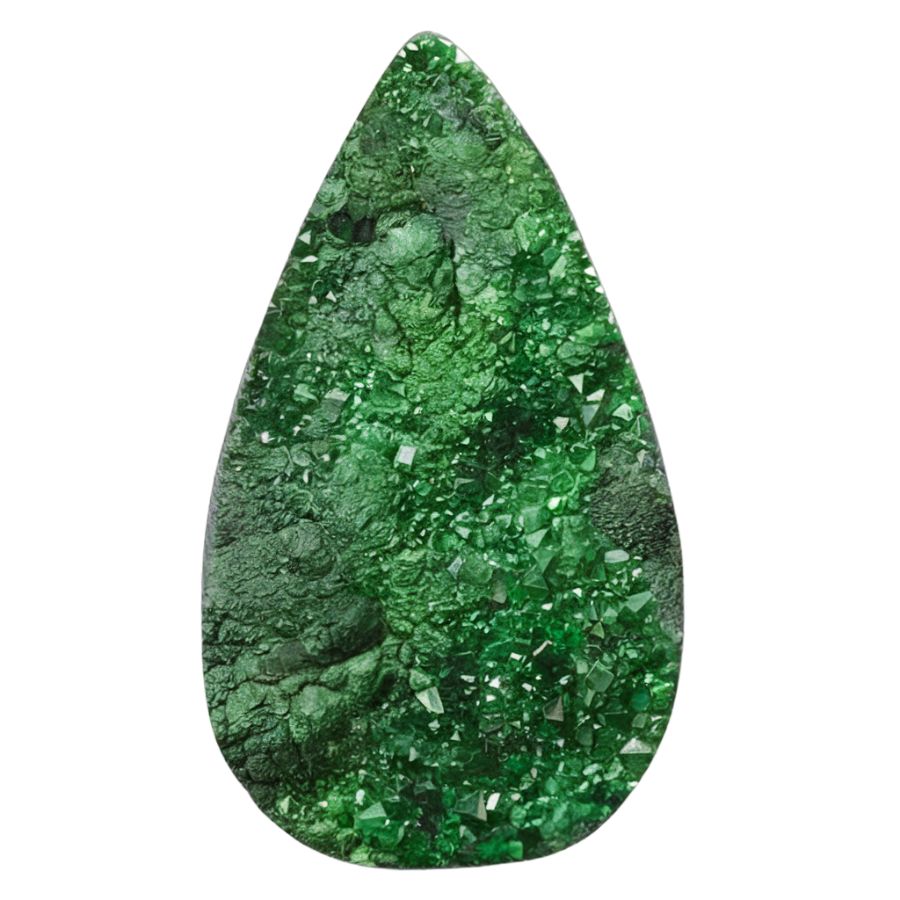
Uvarovite garnet displays a striking emerald-green color that remains consistent in all specimens. Unlike other garnets, where green hues may arise from chromium impurities, uvarovite’s green is inherent to its composition.
Instead of forming large crystals, uvarovite typically grows in clusters of tiny crystals. These clusters, called druzy, create sparkling surfaces that look like green sugar coating the rock beneath.
Under ultraviolet light, it shows an unexpected red glow, adding another layer of interest for collectors. This fluorescence is a unique feature not commonly found in other garnets.
These stones rarely grow large enough for traditional gem cutting. However, their natural crystal formations are so beautiful that they’re often left in their original state. The tiny crystals catch light from multiple angles, creating a dazzling display.
Rhodolite Garnet
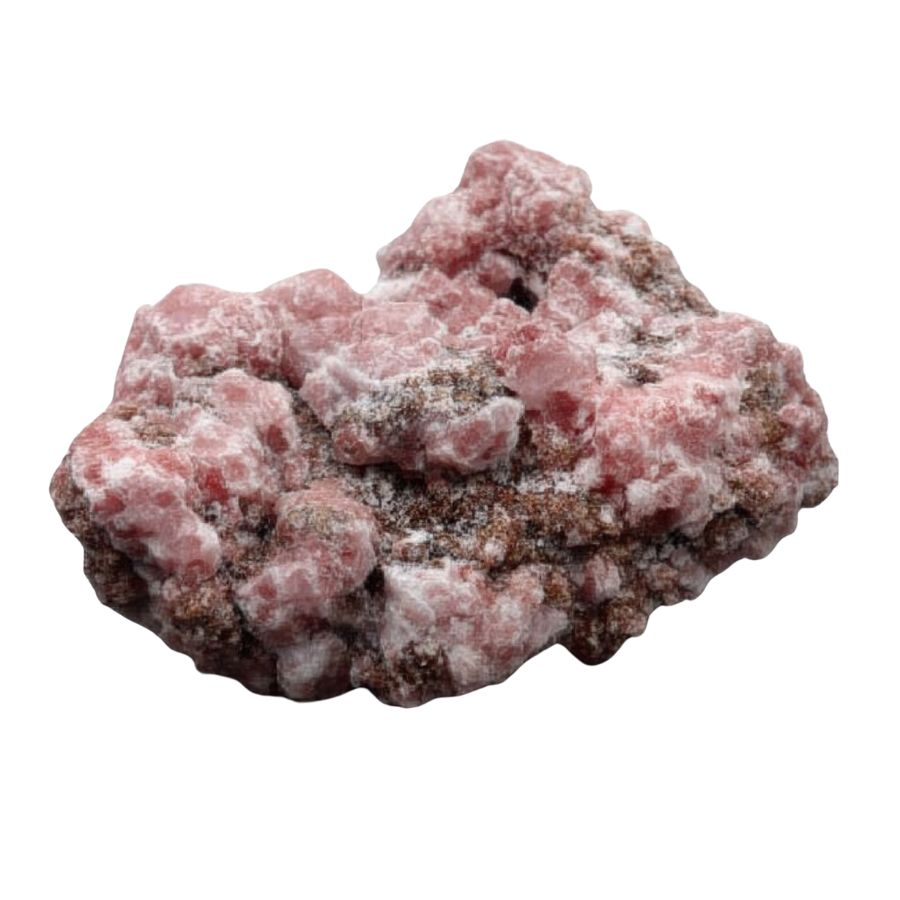
Rhodolite garnet stands out with its beautiful purple-red to raspberry-pink colors. The colors can shift between purple and red depending on the lighting, creating an interesting play of hues. This color range makes it distinctly different from the deeper reds of other garnets.
The stone’s clarity is typically excellent, with very few internal features visible to the naked eye. The surface has a glass-like shine that enhances its natural beauty.
What makes rhodolite special is its mixed composition of two different garnet types. This mixture creates its unique color range and optical properties. The stone often shows stronger color saturation in its center, fading slightly toward the edges.
Rhodolite garnet is particularly valued for its vibrant colors that can mimic more expensive gemstones like rubies and amethysts, making it a popular choice among collectors and jewelers alike.
Hessonite Garnet
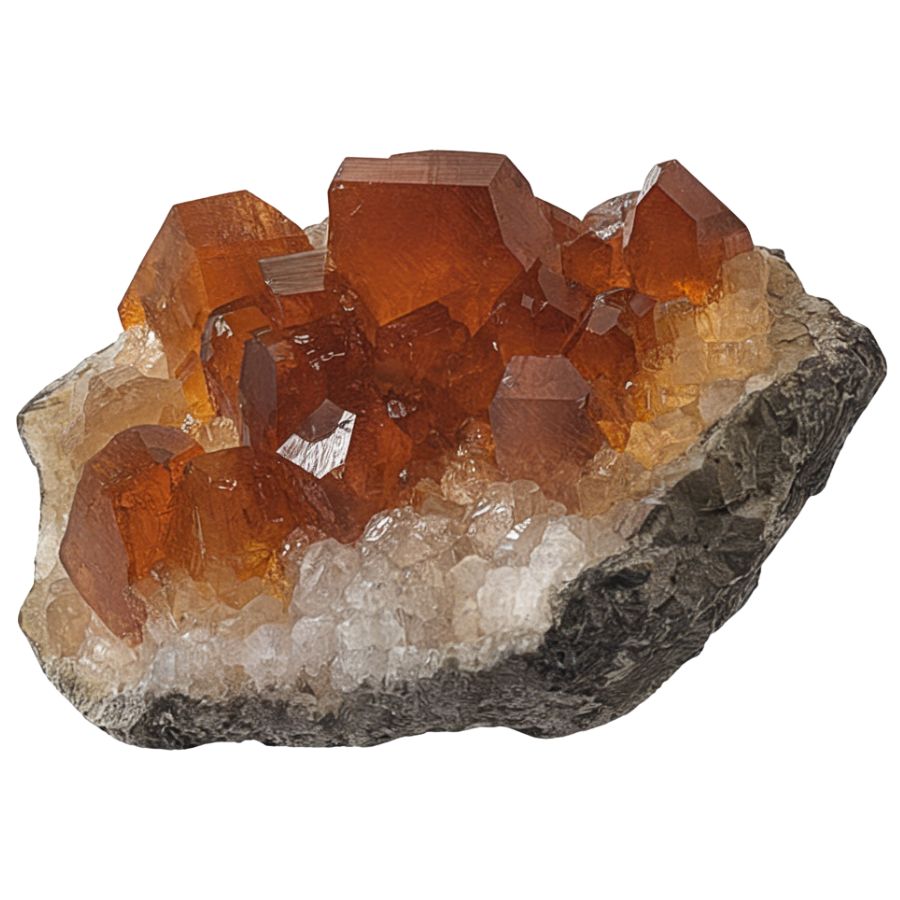
Hessonite garnet showcases warm honey-to-cinnamon colors, ranging from golden yellow to deep reddish-brown. Some pieces display hints of purple, creating complex and appealing color combinations.
Inside the stone, you might find interesting patterns created by tiny needle-like crystals. Unlike many gems where inclusions reduce the value, these internal features are appreciated in Hessonite. They create unique patterns that make each stone one-of-a-kind.
The stone’s transparency varies from crystal clear to slightly cloudy. This variation can create interesting effects, especially when light passes through the stone. Some pieces show a subtle glow that seems to come from within.
High-quality hessonite stones are relatively uncommon, especially in larger sizes. Their warm colors and unique internal features make them particularly interesting to collectors.
Tsavorite Garnet
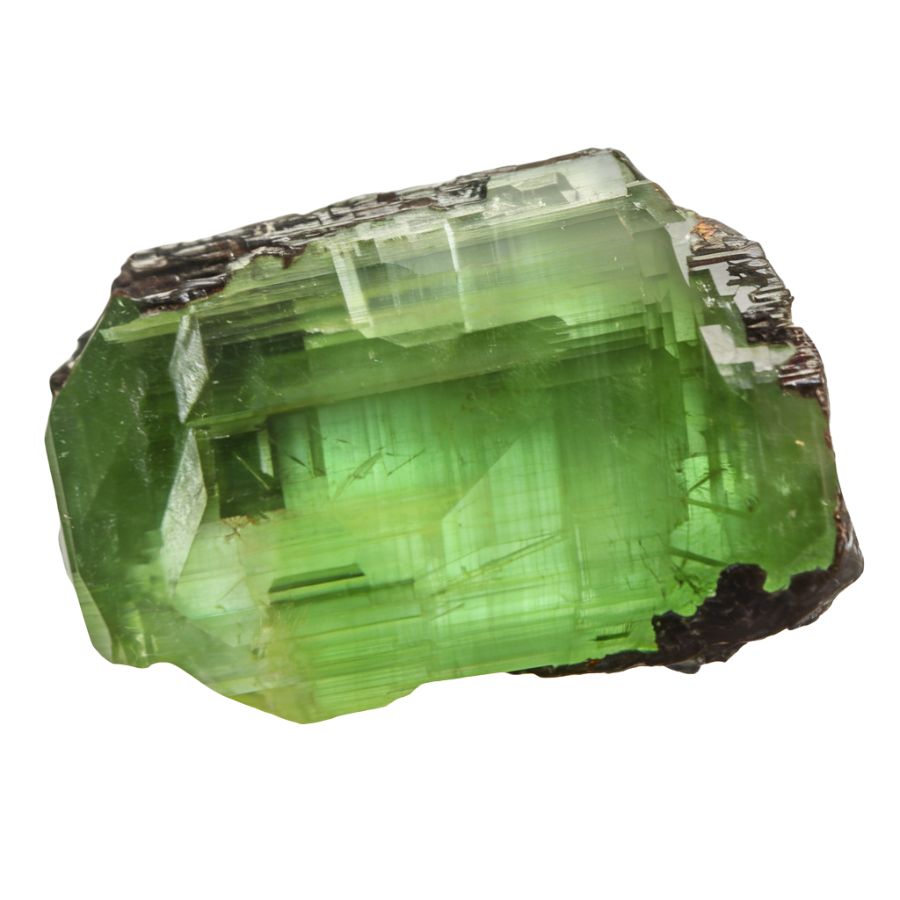
Tsavorite garnet displays a brilliant green color that ranges from bright lime to deep forest green. This stunning color comes from tiny amounts of chromium and vanadium in the stone.
The green is so pure and vibrant that it often matches or surpasses the color of fine emeralds. The surface has a glass-like shine that makes the stone look alive with movement.
Each tsavorite has its own personality in terms of color depth and brightness. Some stones show subtle color changes under different lighting, while others maintain a consistent deep green.
Star Garnet
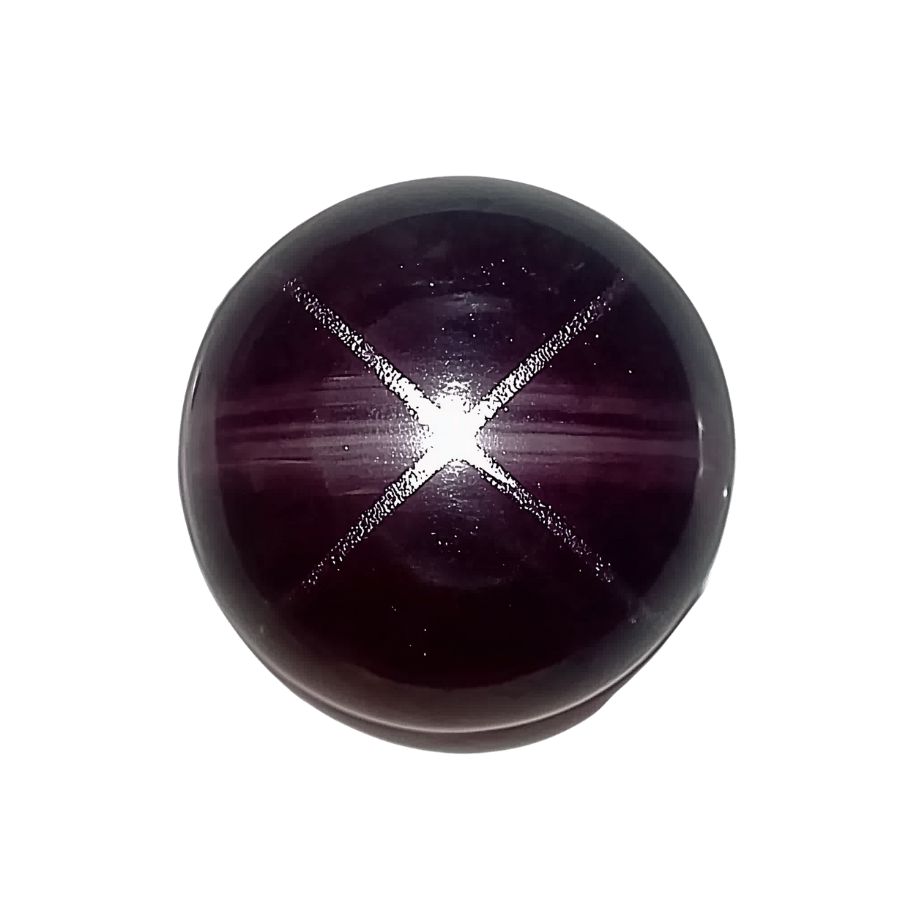
Star garnet shows a fascinating light pattern that looks like a star floating on its surface. This effect, called asterism, comes from tiny needle-like crystals inside the stone. The star usually has four or six rays that move as you turn the stone under light.
The stone’s color is typically deep red to purple-red, often with brown undertones. When polished into a smooth, rounded shape, the star effect becomes more prominent.
The best specimens show sharp, well-defined star rays against a rich, even background color. These stones are quite special because not all garnets can form stars.
The right conditions during formation must exist for the star effect to develop. The tiny crystals inside must align perfectly to create the star pattern. The star effect is natural and permanent – it won’t fade or change over time.
What Rough Garnets Look Like?
Garnets display unique identifying traits when found in their raw, natural state. Look for these distinguishing features:
Look for Distinctive Angular Shapes
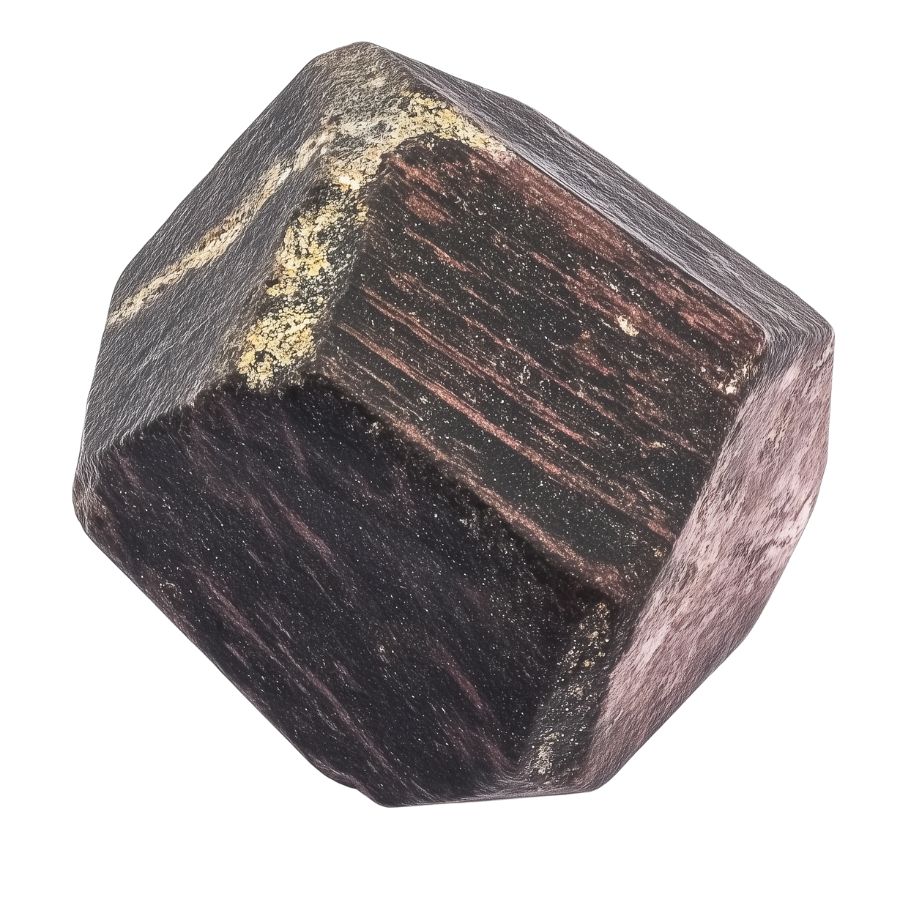
Raw garnet typically forms in dodecahedral or trapezoidal crystal shapes. Think of it like tiny, naturally-formed geometric shapes.
Unlike smooth river rocks, rough garnets have sharp edges and flat faces. Even when broken, they tend to maintain these angular patterns. You’ll often spot them as chunky, block-like crystals that look like they’ve been roughly carved.
Check the Color Range and Transparency
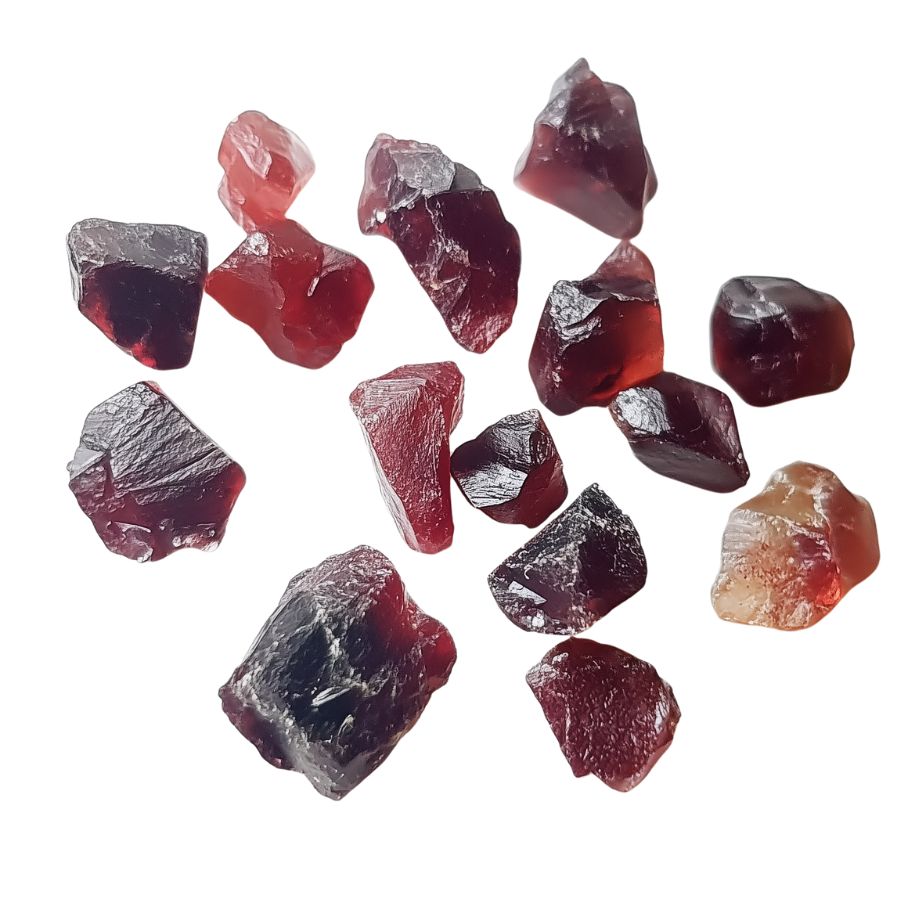
Garnets aren’t just red! Look for deep wine colors, but also keep an eye out for orange-brown, green, or even black varieties.
Hold it up to light – rough garnets often show some translucency at the edges, even if the center seems opaque.
Examine the Surface Texture
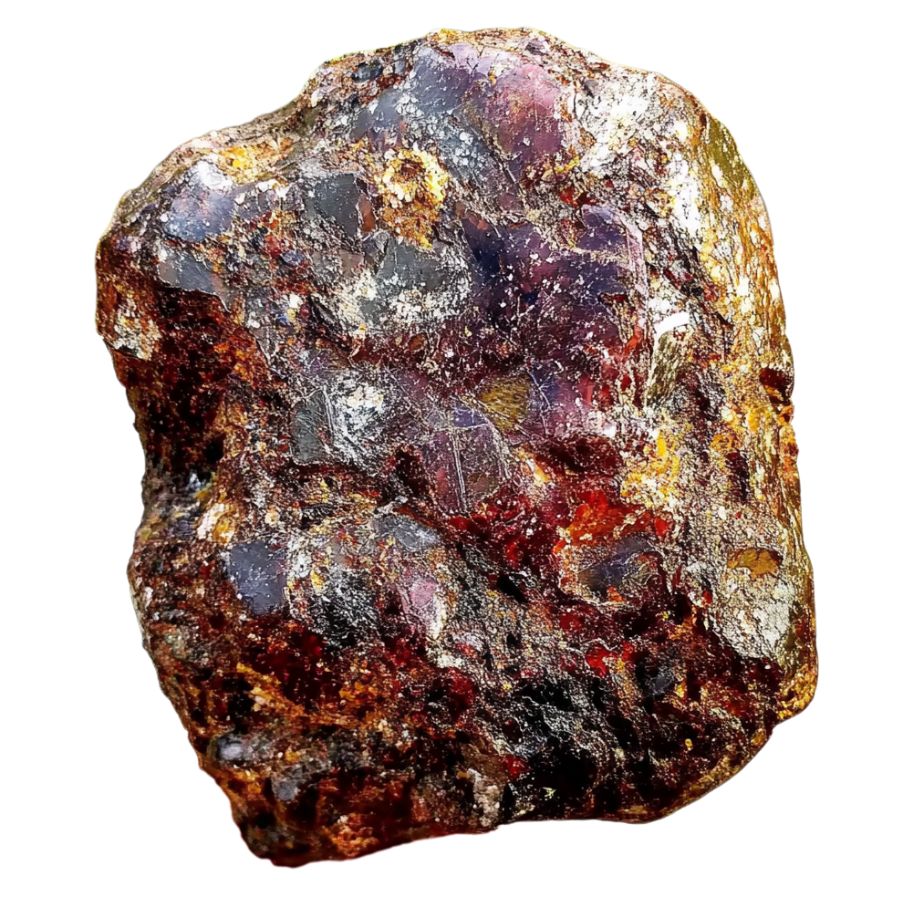
Raw garnets have this unique, almost greasy-looking surface luster. Not shiny like glass, but more like wet plastic.
Run your finger over it – you should feel a smooth yet slightly waxy texture. If it’s been weathered, the surface might be slightly pitted or rough, but you’ll still see that characteristic luster in protected areas.
Test the Hardness and Toughness
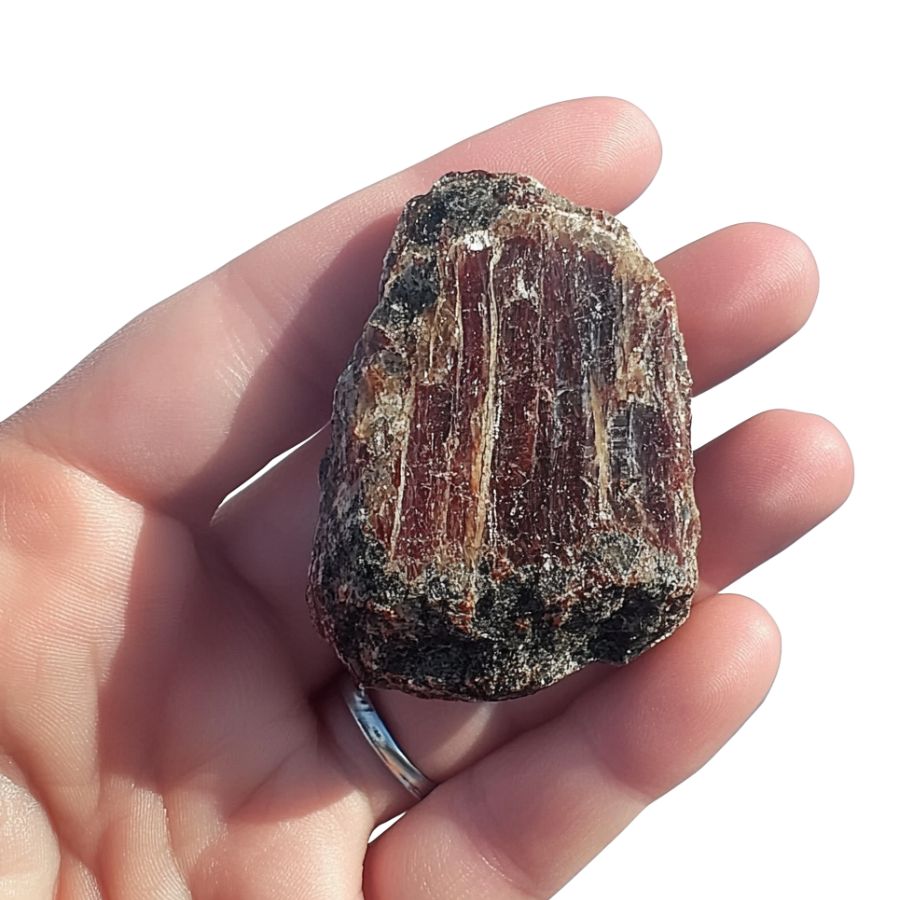
Here’s a quick field test: garnets can easily scratch a penny but won’t scratch quartz. They’re surprisingly heavy for their size – noticeably heavier than a similar-sized piece of quartz or feldspar. Don’t be fooled by lighter stones that look similar!
A Quick Request About Collecting
Always Confirm Access and Collection Rules!
Before heading out to any of the locations on our list you need to confirm access requirements and collection rules for both public and private locations directly with the location. We haven’t personally verified every location and the access requirements and collection rules often change without notice.
Many of the locations we mention will not allow collecting but are still great places for those who love to find beautiful rocks and minerals in the wild without keeping them. We also can’t guarantee you will find anything in these locations since they are constantly changing.
Always get updated information directly from the source ahead of time to ensure responsible rockhounding. If you want even more current options it’s always a good idea to contact local rock and mineral clubs and groups
Tips on Where to Look
To increase your chances of finding garnets, focus your search on these favorable areas:
Metamorphic Rock Outcrops

Look for dark-colored metamorphic rocks, especially schist and gneiss. These rocks often have visible layers or bands.
Garnets appear as dark red or brownish-red crystals embedded in the rock. Common near hiking trails and road cuts where metamorphic rocks are exposed.
Stream Beds & Gravel Banks
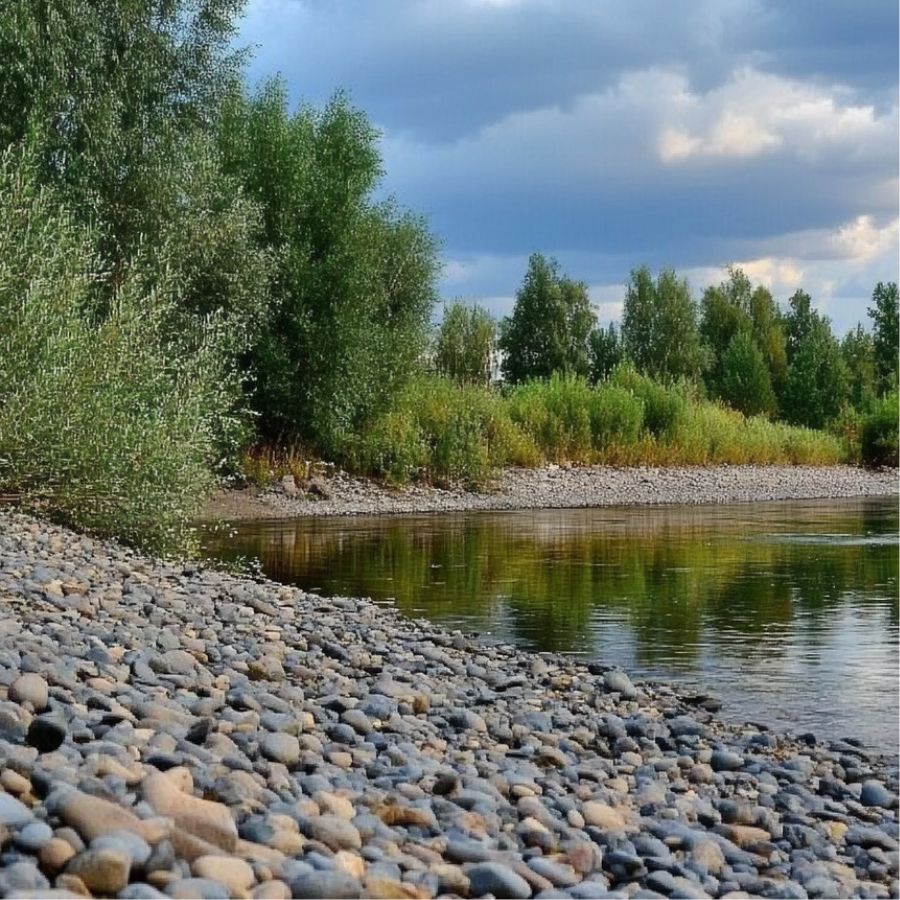
Check gravel deposits in streams, especially after heavy rains. Garnets are heavier than most minerals, so they concentrate in stream bends where water slows down.
Use a pan or sieve to sort through the gravel, keeping an eye out for the distinctive reddish crystals that glimmer when wet.
Pegmatite Areas
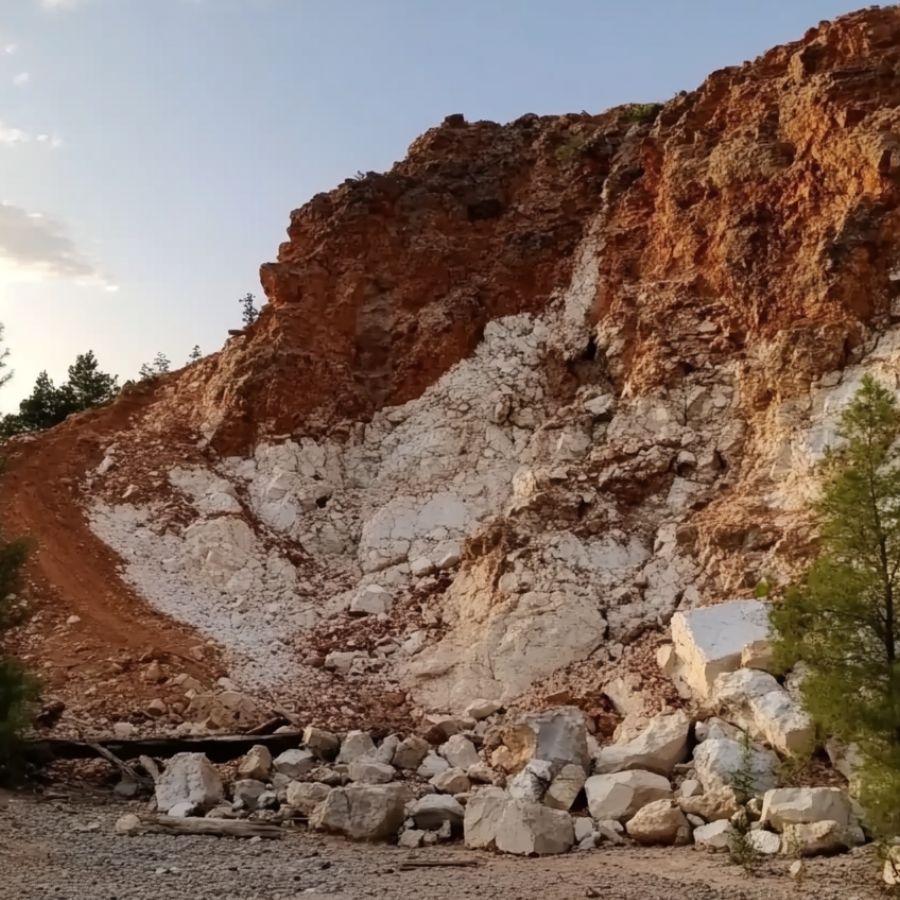
Search around pegmatite formations, which are coarse-grained igneous rocks that sometimes form large crystal pockets where beautiful garnet specimens can be found nestled among other minerals like mica and feldspar.
These areas often have scattered surface rocks and exposed cliff faces that weather over time, releasing garnet crystals.
Old Mining Areas

Explore permitted public mining dumps and tailings piles near historical mica or feldspar mines, where garnet was often discarded as a byproduct during past mining operations and can still be found in abundance among the leftover material.
Some Great Places To Start
Here are some of the better places in the state to start looking for garnet:
Always Confirm Access and Collection Rules!
Before heading out to any of the locations on our list you need to confirm access requirements and collection rules for both public and private locations directly with the location. We haven’t personally verified every location and the access requirements and collection rules often change without notice.
Many of the locations we mention will not allow collecting but are still great places for those who love to find beautiful rocks and minerals in the wild without keeping them. We also can’t guarantee you will find anything in these locations since they are constantly changing.
Always get updated information directly from the source ahead of time to ensure responsible rockhounding. If you want even more current options it’s always a good idea to contact local rock and mineral clubs and groups
Buckhorn Mountain
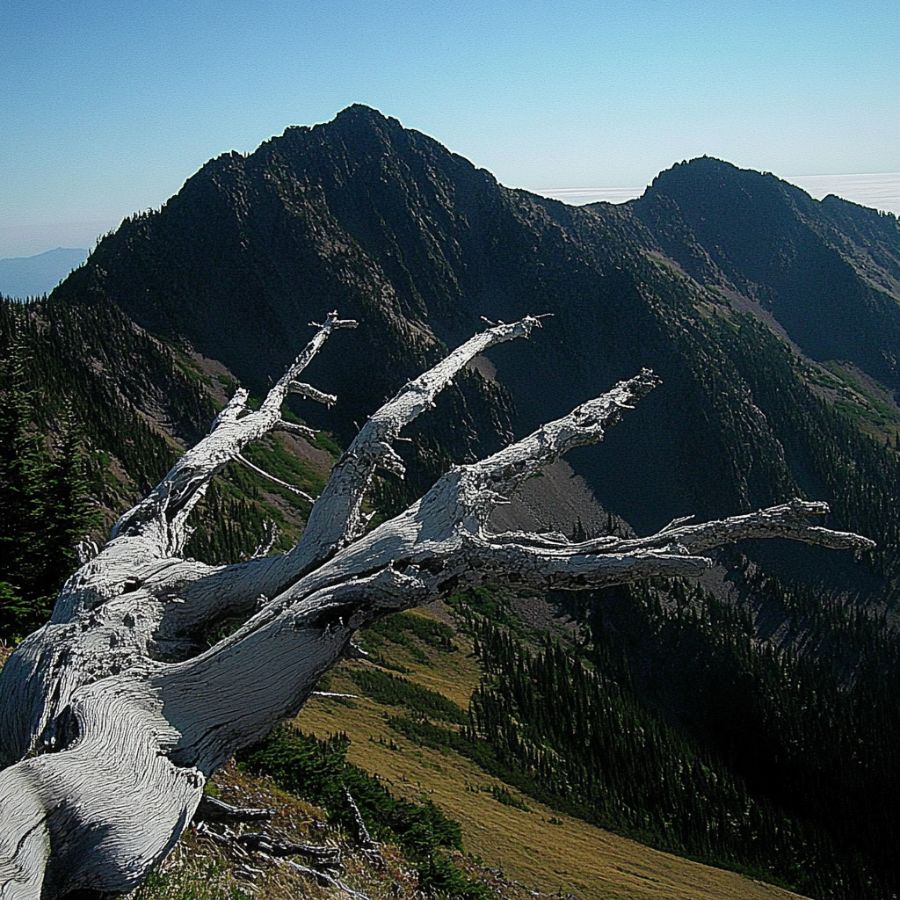
Buckhorn Mountain rises 6,988 feet in the Olympic Mountains on Washington’s Olympic Peninsula. This peak ranks as the 23rd highest in the Olympic Range.
The mountain features important skarn formations created when the Buckhorn Mountain pluton interacted with surrounding sedimentary rocks. These formations date back to the Cretaceous era and create perfect conditions for garnet development.
Visitors searching for garnets should focus on the skarn zones, especially where carbonate-rich layers have changed through heat and pressure. The best spots are often near contact points between plutonic and sedimentary rocks. Many garnets appear close to the mountain’s gold skarn deposits.
Buckhorn Mountain garnets typically show rich red colors and occur alongside other minerals like magnetite.
Tunk Creek
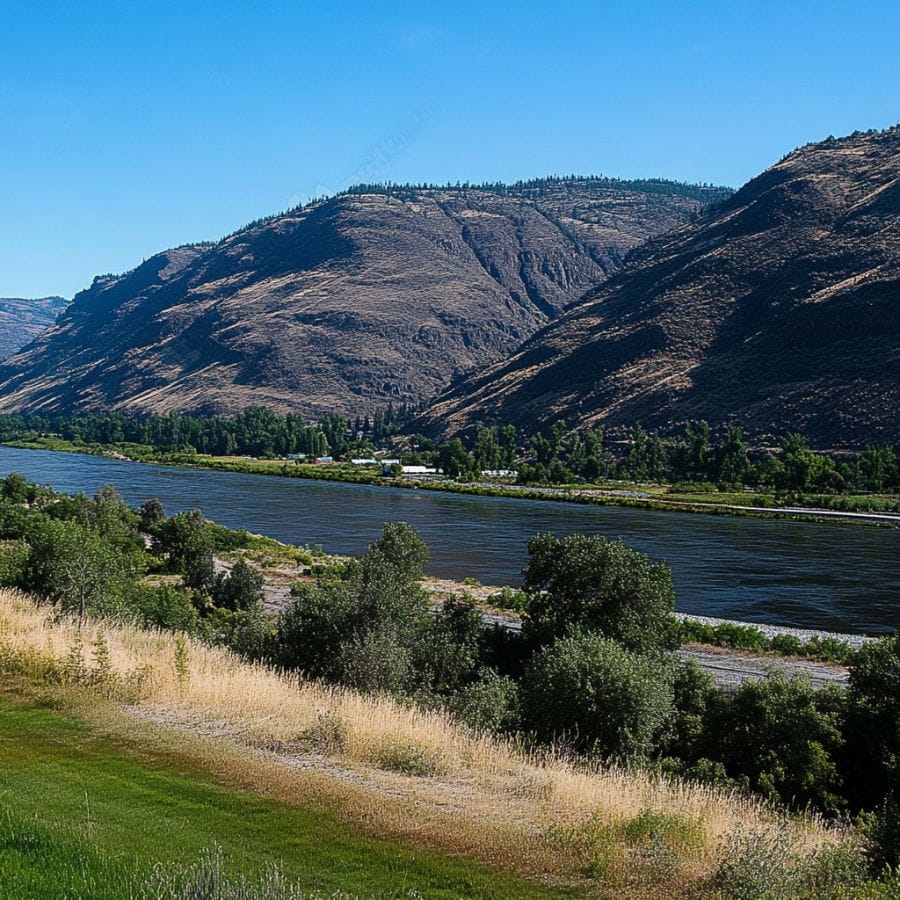
Tunk Creek flows through Okanogan County, close to the town of Riverside. This creek is surrounded by a mix of gravels, gneisses, and hornblendite rock formations that make it special for gemstone hunters.
Garnets have been found in this area, along with other interesting minerals like thulite, muscovite, and even corundum (which includes rubies and sapphires). The creek sits within the Northern Rocky Mountains region, giving it a striking geological setting.
The creek’s connection to hornblendite and metamorphic rocks creates perfect conditions for garnet formation. Long ago, tectonic activity and heat changed regular rocks into the gem-bearing ones we see today.
Rockhounds should focus their search in the gravels and gneisses along the creek bed. These spots are most likely to contain garnets and other gemstones. Many collectors visit this location each year because of its reliable yield of quality garnets with deep red colors.
Orient District
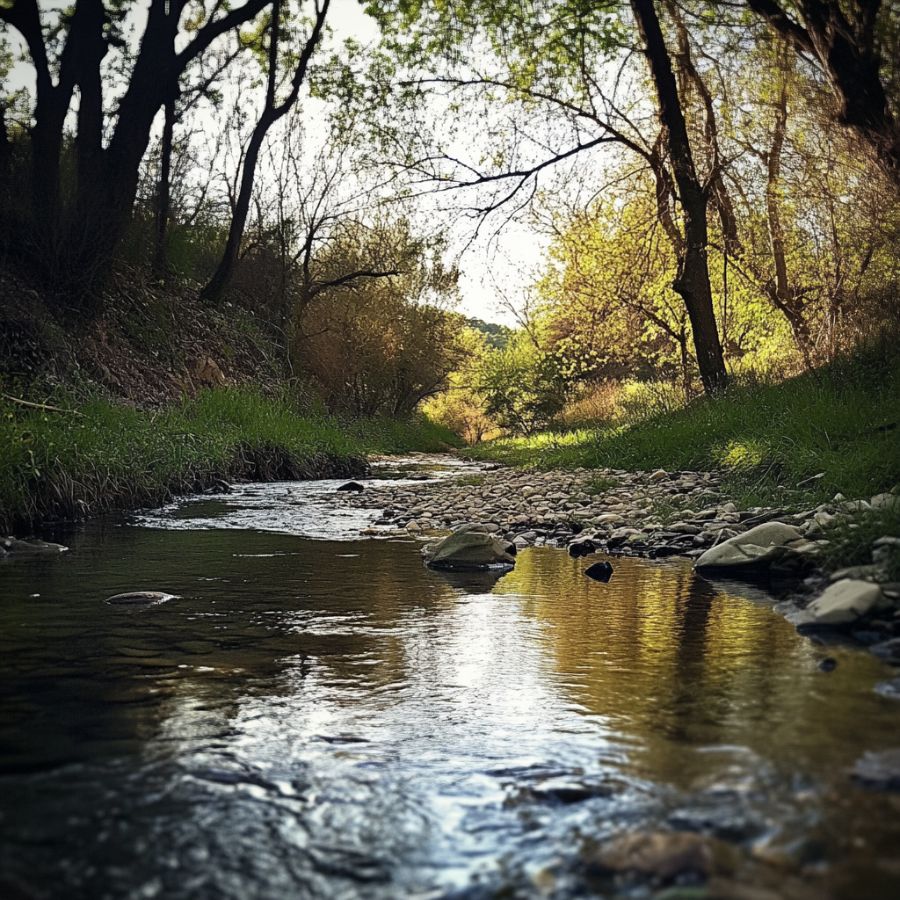
The Orient District lies in the northeastern part of the state, close to the Canadian border. Stevens County, where the district is located, has rich mineral deposits that formed millions of years ago.
Garnet has been discovered in the Orient District, along with other valuable minerals like gold and silver. You can find garnets in the metamorphic rocks throughout the district.
The First Thought Mine area is a good spot to search, as garnets often appear in the rock walls and loose material around old mine workings. Small red garnets may be visible in rocks near abandoned mine sites.
Local rockhounds often explore the hillsides and creek beds where weathering has freed garnets from their host rocks. The district’s rugged terrain makes hunting challenging but rewarding for those willing to search carefully through the mineral-rich soils.
Vesper Peak
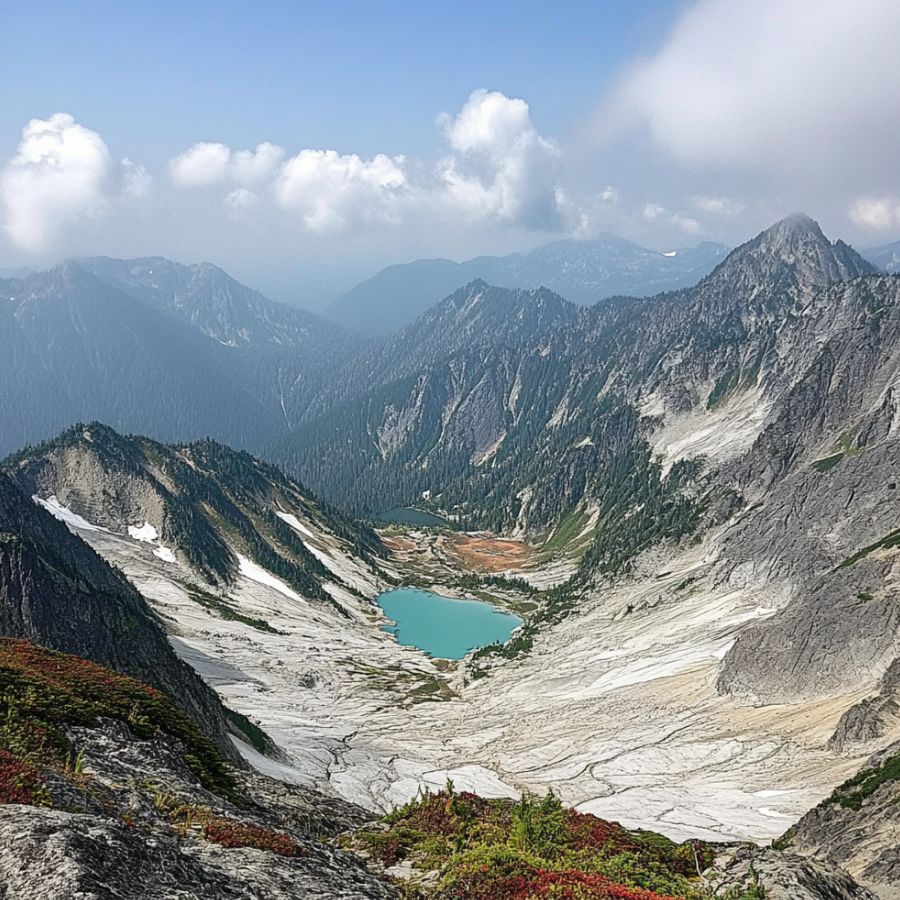
Vesper Peak is a mountain in the North Cascades of the state. Located about 18 miles south of Darrington, this peak stands out with its gentle slopes on the south and east sides, but steep north face.
Garnets have been discovered at Vesper Peak, particularly the grossular variety. These beautiful reddish-brown crystals attract rockhounds from across the region.
Vesper Peak mainly consists of quartz diorite rock with areas of metavolcanic rock on its southern slopes. When limestone underwent heat and pressure changes, it created skarn zones where garnets now form.
Collectors should focus their search in the skarn zones near the 48-55 Mine (also called the Garnet Mine). This area sits about 300 feet southwest of the ridge crest. Garnets here often appear embedded in metamorphosed limestone pockets.
Nancy Creek
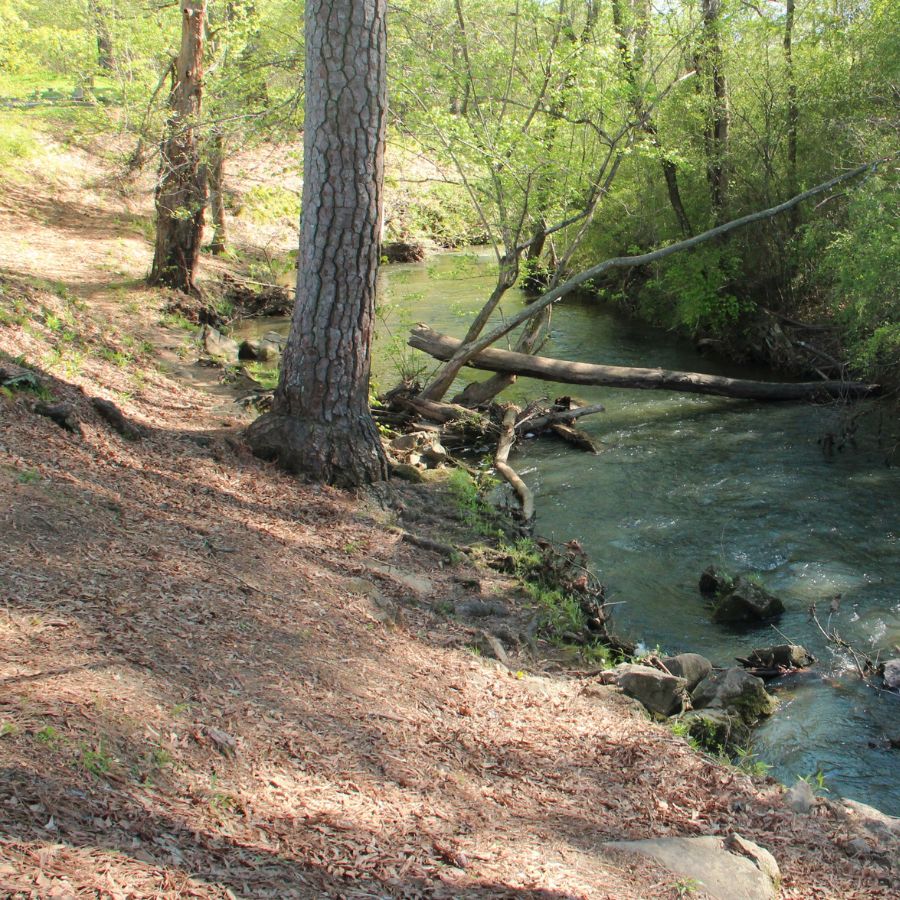
Nancy Creek runs through Ferry County in northeastern Washington state. This small stream is part of the larger watershed in an area known for its rich mineral deposits.
Garnet has been found in the Nancy Creek area, along with other minerals like gold and quartz. The reddish-brown garnets here typically appear embedded in metamorphic rocks.
The creek flows near the impressive Kettle Dome, a large geological formation where deep earth rocks have been pushed to the surface over millions of years. This special setting creates perfect conditions for garnet formation.
Rockhounds can find garnets by examining metamorphic rock outcrops along the stream banks. Look carefully in schist or gneiss rocks, which often contain these gemstones. Searching around bends in the creek or in slower water areas can be productive as these spots collect heavier minerals.
Places Garnet has been found by County
After discussing our top picks, we wanted to discuss the other places on our list. Below is a list of the additional locations along with a breakdown of each place by county.
| County | Location |
| Chelan | Scotty Creek Placers |
| Chelan | Gaynor Garnet Occurrence |
| Chelan | Holden Mine |
| Chelan | Blankenship Prospect |
| Ferry | Belcher Mine |
| Ferry | Kelly Camp Mine |
| Ferry | Midnight Mountain |
| Ferry | Mount Tolman Deposit |
| Ferry | Talisman Mine |
| Garfield | Pomeroy |
| Grant | Perch Point-Potholes Reservoir |
| Grays Harbor | Cow Point |
| Grays Harbor | Point Brown |
| Grays Harbor | Skunk Creek 19 Mine |
| King | Guye Mine |
| Kittitas | Mineral Creek Mine |
| Okanogan | Johnson Creek Mine |
| Okanogan | Roosevelt Mine |
| Okanogan | Strawberry Lake Prospect |
| Okanogan | Controller and Red Bird Prospect |
| Okanogan | Great Western Mine |
| Okanogan | Monse |
| Okanogan | Peerless Prospect |
| Okanogan | Kelsey Prospect |
| Pacific | Beards Hollow Placer |
| Pacific | Fort Canby |
| Pacific | Leadbetter Point |
| Pend Oreille | High Noon Mine |
| Skagit | Hamilton Mine |
| Snohomish | Deer Creek |
| Snohomish | Glacier Peak Mine |
| Snohomish | Barclay Creek Skarn |
| Snohomish | Uncle Sam Mine |
| Stevens | Cannon Mine |
| Stevens | Eagleton Prospect |
| Stevens | Orient Gneiss |
| Stevens | Midnite Mine |

